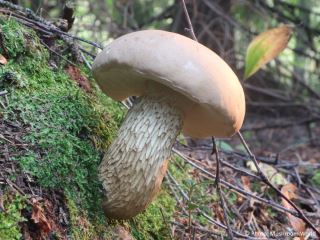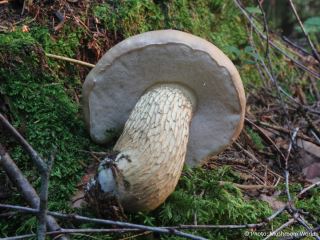Welcome to Mushroom World
Step into the fascinating world of mushrooms with Mushroom World – your go-to resource for fungi information. Our site offers clear information and beautiful images of mushrooms.
If you're curious about what fungi actually are and how they differ from plants and animals, be sure to visit our what are fungi? page for an easy-to-understand explanation.
Since there are thousands of known species of mushrooms, we have limited our database to the most common ones. New species are also continuously added to the site.
Come and explore the wonders of mushrooms with us. We hope you find our site informative, inspiring, and a valuable resource on your journey of mushroom discovery.
What you can do on Mushroom World
Browse the database
Explore mushrooms from the alphabetical list or search by name or properties.
Identify a mushroom
Know some characteristics but not the name? Use our mushroom identification helper to narrow it down.
New to identification? Start with identification basics.
Test your knowledge
Try our identification quiz and see how many mushrooms you recognise. Each run gives you new questions.
Upload your photos
Have good mushroom photos to share? Use the upload form and we will see if we can include them on the site.
Today's Mushroom
A quick highlight from our database
Today's mushroom is Tylopilus felleus (Bitter Bolete). It grows in North America, Europe.
Dimensions: Cap 6-12 cm diameter, stem 7-10 cm tall * 2-3 cm diameter
Description:
Tylopilus felleus, commonly known as the bitter bolete or bitter tylopilus, is a type of bolete characterized by slightly to distinctly pink pores on the underside of its bun-shaped brown cap, as well as a dark net on its thick stem. It is further distinguished by its intensely bitter taste. The mushroom forms mycorrhizal relationships with coniferous trees and can be found growing individually, sparsely, or in groups in coniferous woodland environments.
Cap colour ranges from grey-yellow to pale or walnut-brown, starting slightly downy and later developing a smooth, matte lustre. It begins as convex and flattens with maturity. The flesh is whitish with a pinkish tinge beneath the cap cuticle, remaining unchanged; it is thick and firm. Pores initially pale cream but later turning pinkish, the tubes are round, densely packed and fairly small, terminating in palid pores spaced between 1 and 2 per mm that turn coral pink as the fruitbody matures. Stem club-shaped, ranging from whitish to pale brown above, and paler brown to tan below. It features a pronounced network pattern in brown, forming wide meshes, particularly on the upper third. The base has a white basal mycelium. It has no ring. Spore print brownish pink.
Microscopic Features: Spores are subfusiform, measuring 11-15 x 4-5μm.
Tylopilus felleus on the www.first-nature.com web site.
Tylopilus felleus on the MushroomExpert.Com Web site.
If you are interested in this mushroom, look it up in our database for more detailed photographs and additional information.


Many mushrooms are poisonous, and some can be lethally toxic. Distinguishing between edible and poisonous mushrooms can be very challenging. Therefore, we strongly advise against consuming wild mushrooms. This website does not contain any information about the edibility or toxicity of mushrooms.
Although efforts have been made to ensure accuracy on this website, the information may contain errors and omissions. Therefore, all content provided is for educational and informational purposes only and should not be relied upon or used as a basis for consuming any plants or mushrooms.
External links are provided for reference only. We do not endorse or take responsibility for the content, advice, or products found on these sites or in any advertisements shown on this website.